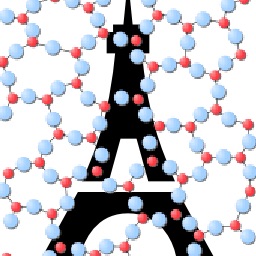Evidence for Anomalous Dynamic Heterogeneities in Isostatic Supercooled Liquids
Upon cooling, the dynamics of supercooled liquids exhibits a growing transient spatial distribution of relaxation times that is known as dynamic heterogeneities. The relationship between this now well-established crucial feature of the glass transition and some underlying liquid properties remains challenging and elusive in many respects. Here we report on computer simulations of liquids with a changing network structure (densified silicates), and show that there is a deep and important link between the mechanical nature characterized by topological constraints and the spatial extent of such fluctuations. This is not only revealed by a maximum in the dynamic correlation length ξ4 for fluctuations when the liquid becomes isostatically rigid, but also by a contraction of the volume of relaxing structural correlations upon the onset of stressed rigidity.
